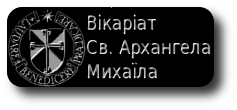
Precious Blood for Young Children And More on Cohabiting Couples
30-07-2008
ROME, JULY 29, 2008 (Zenit.org).- Answered by Legionary of Christ Father Edward McNamara, professor of liturgy at the Regina Apostolorum university.
Q1: I am a religion teacher at a primary school in the United States. Right now we are learning about the sacraments, particularly about the Eucharist. My students (ages 10 to 11) have asked me many times why the "wine" is not offered to children, even when they are serving at the altar as acolytes. I assume that the prohibition to drink alcohol in the United States until you are an adult has to do with it, but as my son once told a friend who is a priest, it is not wine -- it is the Blood of Christ. Is there any rule or policy regarding distributing the "wine" to children, other than the same pastoral reason for which it is not distributed to the whole congregation, for the sake of time? -- B.L., Key Biscayne, Florida
Q2: In our own church, at busy Masses we have the habit of having one Eucharistic minister going down to the back of the church in order to distribute Communion. Personally I would much prefer to see Communion distributed from the step of the sanctuary. I was wondering if the rubrics have any guidelines on the matter. I find distribution at the rear of the church leads to a big crowd of people clustering around the minister and making reception of Communion look a bit of a mess. -- J.McE., Dundalk, Ireland
A: Unless there are specific diocesan policies, I know of no general rule excluding children from receiving the Precious Blood.
Certainly in most Eastern Churches, which always administer Communion under both species, even very small children receive the Eucharist in this manner. Many of these Churches distribute the two species together, directly to the mouth, using a special spoon.
Although I am unaware if the question has been legally tested in the United States, I doubt that there are serious legal concerns regarding distribution of the Precious Blood to children.
If the U.S. Supreme Court can justify admitting the use of an illegal hallucinogen to a specific group in the name of religious freedom, then a few drops of what is apparently an alcoholic beverage is unlikely to muster a challenge.
Of more concern is the possibility of an adverse reflex reaction to wine on the part of young children unused to its strong taste, especially when the most common form of distribution is directly from the chalice. It is also more likely that children could drop the chalice.
This difficulty can be remedied by initiating children to Communion under both kinds under the form of intinction in which a corner of the host is dipped in the chalice and placed directly upon the tongue. This allows them to gradually become accustomed to the taste as well as obtaining the spiritual benefit of receiving both species.
It has the added advantage of introducing them to the possibility of receiving the host on the tongue in places where receiving on the hand has not only been permitted but has become the only option explained to young children.
Regarding the manner of distributing Communion, No. 160 of the General Instruction of the Roman Missal (U.S. version) says:
"The priest then takes the paten or ciborium and goes to the communicants, who, as a rule, approach in a procession.
"The faithful are not permitted to take the consecrated bread or the sacred chalice by themselves and, still less, to hand them from one to another. The norm for reception of Holy Communion in the dioceses of the United States is standing. Communicants should not be denied Holy Communion because they kneel. Rather, such instances should be addressed pastorally, by providing the faithful with proper catechesis on the reasons for this norm.
"When receiving Holy Communion, the communicant bows his or her head before the Sacrament as a gesture of reverence and receives the Body of the Lord from the minister. The consecrated host may be received either on the tongue or in the hand, at the discretion of each communicant. When Holy Communion is received under both kinds, the sign of reverence is also made before receiving the Precious Blood."
The expression "as a rule" means that this is the best option. But it does not exclude other possibilities if logistical difficulties make it impractical for all to approach the presbytery or sanctuary in a reasonable lapse of time.
However, other solutions should always ensure a dignified approach to Communion and the possibility of making a suitable act of reverence including kneeling in those countries where the bishops' conferences have not specified another habitual form of reception (as is the case of Italy and most other countries).
Going to the back of the church, as our reader has noticed, can lead to disorganization. This makes it easier for hosts to fall and for people with evil intentions to steal a sacred host.
Therefore, in conclusion, it is best that all communicants approach the presbytery area to receive Communion, even from several ministers. If this is not practically possible, then I would suggest using side altars as suitable distribution points. If there are no suitable side altars, then I suggest setting up temporary fixed spots for distributing the Eucharist at which the minister of holy Communion remains in place while the faithful approach him or her.
If possible, this place could be slightly elevated above the floor so as to make administration easier for the minister and facilitate the possibility of kneeling to those faithful who choose to do so.














